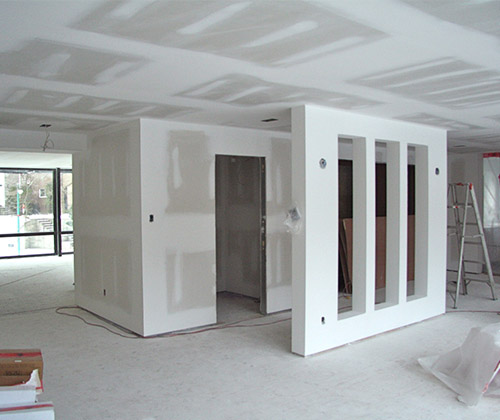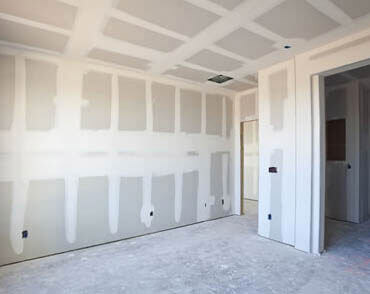
- By James McCarthy
- In Ceilings, Dust Control, Repairs, Taping
The not so easy techniques to good drywall jobs
Simple basic drywall techniques
There are many ways to drywall a room but there are only a few correct ways to accomplish the task of perfect drywall installation. One of the first things you need to consider is eliminating as many drywall butt joints as you can. The fewer the butt joints you have the lass you have to mud. In addition, drywall sheets are expensive these days and calculating the amount of drywall you need also contains a calculation for butt joints. This is what professionals do when calculating how much drywall to order and how much finish work is needed based on butt joints. Filling in attachment screws with joint compound is an easy process but it still takes time to make a drywall job a great one. Everyone can see a bad drywall job but if the work you do goes completely unnoticeable, you have accomplished your goal of a perfect drywall job.
Mixing drywall joint compound is the first step after installing the drywall. For a professional looking drywall job no lumpy mud that is not too thin or too thick can be used. It has to be perfect for a smooth application. Once the walls are up, the taping begins and to be honest, taping isn’t difficult but the professionals make it look very easy. What separates the pro’s from the average DIY’er is patience. The first coat goes on and and then scraped with a drywall tool and then they’re done for the day. The next day another thin coat goes and then they’re done again for the day. This process can go on for five days until the joint compound creates a wide smooth edge covering the joint where little or no sanding is ever needed. Yhe process needs to take time and the DIY’er needs to have patience and that’s the key to a good drywall job
The other important aspect of expert drywall jobs is choosing the right joint compound. You can use an “all purpose” compound for the first and additional layers but the final cot needs to be a finish compound. This compound goes on wide and is different then the all purpose mud.
You should never use a “fast drying” compound at any time on your walls. These fast drying compounds crack and will give you all kinds of headaches at the end of your job. Not onl;y that, they tell you that you can cut your job time in half and if you’re an expert this may be true but the DIY’er is going to spend a great deal of time sanding this compound and what a mess that makes.
Feather the joints
Feathering the joints is where the expert separates himself from the DiY’er. Feathering leaves no edges and requires very little if any sanding. This is your end goal. When your done you’re done. You should not have to sand edges or fix mistakes. Your job should look like this. If it doesn’t then you will see all the errors when you paint.







